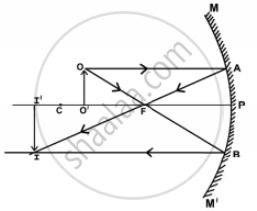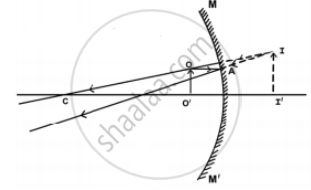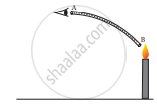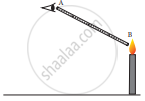Advertisements
Advertisements
प्रश्न
a) Draw ray diagrams to show how the image is formed using a concave mirror, when the position of object is:
- at C
- between C and F
- between F and P of the mirror.
b) Mention the position and nature of image in each case.
उत्तर
a)
i. At the centre of curvature C

ii. Between C and F

iii. Between the focus F and the Pole P of the mirror.

b) Mention the position and nature of image in each case.
| Position of object | Position of Image | Nature of Image |
| At the centre of curvature C | AtC | Real and Inverted |
| Between C and F | Beyond C | Real and inverted |
| Between F and P | Behind the mirror | Virtual and Erect |
APPEARS IN
संबंधित प्रश्न
Write true or false of the following statement.
The moon is a natural source of light.
Fill in the blank
A medium through which light cannot pass is called the ....................
Does the flame of a gas stove emit light?
Name a few living things which emit light.
Answer the following.
What is meant by luminous intensity? What is one lumen?
Write whether of the following objects are luminous or non-luminous.
| Object | Luminous/Non-luminous |
| A book | |
| A burning candle | |
| A wax cloth | |
| A pencil | |
| A pen | |
| A light bulb | |
| A tyre | |
| A torch |
Match the following.
| Group A | Group B |
| (a) Mirror | (1) Non-luminous |
| (b) Firefly | (2) Inverted image |
| (c) Pinhole camera | (3) Reflection |
| (d) Moon | (4) Luminous |
Describe the pictures.


State whether true or false. If false, correct the statement.
If a ray of light passes obliquely from one medium to another, it does not suffer any deviation.
Why are traffic signals red in colour?
